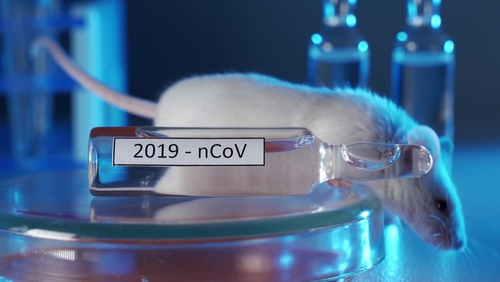
In an incident that reads like a scene from a slapstick comedy, a laboratory technician experienced a moment of sheer embarrassment when a mouse managed to outwit her and escape in a Chinese lab. The event, which occurred on January 18th, 2024, has raised eyebrows and concerns about the standards of security and safety in scientific research facilities.
The lab worker, identified as Tian Yongyi, was caught in a frantic search for the elusive rodent. In a display of cunning agility, the mouse clung to her, scrambled over her back, and ultimately made its great escape. This spectacle unfolded even as Yongyi lay on the ground, scouring under cabinets in a desperate attempt to locate the creature.
Is it a Covid lab squeak? Mouse manages to escape hapless Chinese laboratory worker by clinging on to the back of her hazmat suit for ten minutes while she searches for the rodent https://t.co/gZVL3qoTlE pic.twitter.com/Nnc3XdZk2d
— Daily Mail Online (@MailOnline) January 18, 2024
This incident is not just a matter of a small animal getting away; it speaks volumes about the potential risks associated with lapses in laboratory security. If a mouse can so easily evade capture within a controlled environment, it begs the question of what other breaches could occur, possibly with more dire consequences.
Moreover, the fact that this took place in a laboratory setting is particularly disconcerting. Labs are supposed to be bastions of precision and control, where every variable is accounted for. Yet here we have a situation where something as basic as containing a lab animal has gone awry. It’s a stark reminder that human error can never be entirely eliminated, but it also suggests a need for stricter protocols.
NO MORE BUSINESS WITH CHINA…..Is it a Covid lab squeak? Mouse manages to escape hapless Chinese laboratory worker by clinging on to the back of her hazmat suit for ten minutes while she searches for the rodenthttps://t.co/DHnpYihLgw
— Cecilia bowie Alladin sane Parodi (@bowie_sane) January 18, 2024
The implications of such an escape extend beyond mere embarrassment for the technician involved. It raises legitimate concerns about the containment of potentially hazardous materials or organisms. In a world still reeling from the impacts of the COVID-19 pandemic, the thought of any breach in a lab setting is enough to cause alarm.
Critics might argue that the escape of a single mouse is hardly indicative of systemic issues within the scientific community. However, it’s essential to consider the broader context of laboratory safety and the importance of maintaining public trust in these institutions. Incidents like this, while seemingly minor, can chip away at that trust and fuel skepticism about the integrity of scientific research.
It is incumbent upon laboratory managers and staff to ensure that all safety measures are rigorously enforced and that staff are adequately trained to handle such situations. The escape of a mouse may be a minor mishap, but it should serve as a wake-up call to tighten up practices and prevent any future occurrences that could have far more significant repercussions.
In conclusion, while some may find humor in the image of a lab technician being outmaneuvered by a mouse, the underlying issues it highlights are no laughing matter. It’s a reminder that vigilance in laboratory settings must be paramount and that even the smallest slip-up can lead to questions about the credibility and reliability of our scientific establishments.













